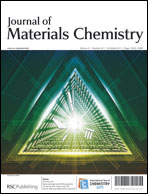Zirconium dioxide topological surfaces with low coordination sites
Abstract
Density functional theory has been applied to model the plane and topologically complex surfaces for pure and yttrium stabilized cubic ZrO2. For pure ZrO2, the dominance of the (111) plane surface found in previous studies has been confirmed. Based on this surface, a series of stepped, cornered and kinked surfaces has been constructed and optimized. We observe a trend relating a decrease in stability to the decrease in the oxygen coordination number of surface Zr ions which occurs with increasing surface topological complexity. For yttrium stabilized


 Please wait while we load your content...
Please wait while we load your content...